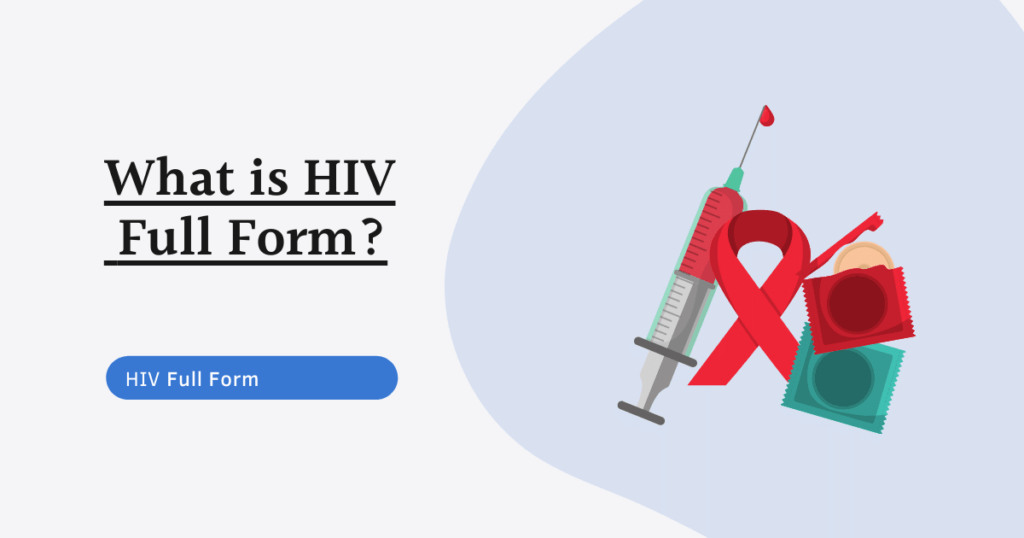Full Form of HIV
The full form of HIV is the Human Immunodeficiency Virus.
| HIV | Human Immunodeficiency Virus |
| Category | Diseases |
| Region | Global |

What is HIV
HIV (human immunodeficiency virus) is a virus that attacks cells that help the body fight infection, making a person more vulnerable to other infections and diseases.
It is spread by contact with certain bodily fluids of a person with HIV, most commonly during unprotected sex (sex without a condom or HIV medicine to prevent or treat HIV), or through sharing injection drug equipment.
Stages of HIV Infection
Stages of Infection – (assuming no treatment)
There are four stages of HIV and as with all illnesses, how it progresses, how long it takes and the affect it has on the individual depends on a number of factors for example, general health, lifestyle, diet etc.
Stage 1: Infection
HIV quickly replicates in the body after infection. Some people develop short lived flu-like symptoms for example, headaches, fever, sore throat and a rash within days to weeks after infection. During this time the immune system reacts to the virus by developing antibodies – this is referred to as ‘sero-conversion’.
Stage 2: Asymptomatic
As the name suggests, this stage of HIV infection does not cause outward signs or symptoms. A person may look and feel well but HIV is continuing to weaken their immune system. This stage may last several years (an average of 8 to 10 years) and without a HIV test many people do not know they are infected.
Stage 3: Symptomatic
Over time the immune system becomes damaged and weakened by HIV and symptoms develop. Initially they can be mild but they do worsen, symptoms include fatigue, weight loss, mouth ulcers, thrush and severe diarrhoea.
The symptoms are caused by the emergence of opportunistic infections; they are referred to as opportunistic infections because they take advantage of a person’s weakened immune system. Some examples of opportunistic infections are PCP, toxoplasmosis, TB and kaposi sarcoma.
Stage 4: AIDS/Progression of HIV to AIDS
There is no single test for AIDS; doctors will look at a variety of symptoms including the CD4 count, the viral load and the presence of opportunistic infections in order to make an AIDS diagnosis
Although HIV disease progression is described in stages, it is not inevitable that a person will go from Stage 1 Infection to Stage 4 AIDS. There is treatment available that can prevent a person developing AIDS and deal with the symptoms of HIV infection.
There are a number of people living with HIV who have not developed AIDS even without medical intervention, these people are referred to as ‘long-term non progressors’ and have been subject to much research in the hope of finding more information about their immune systems.
Where did HIV come from?
How is HIV caused?
What does it mean if you are HIV positive?
Related Full Forms List
If you have questions and answers related to HIV, then tell us your thoughts in the comment, know the complete meaning of HIV in this article.
Find Useful Terms and Definitions which we use in daily life but we do not know their full name meaning, Here’s a list of important abbreviations that you should know.




Leave a Reply